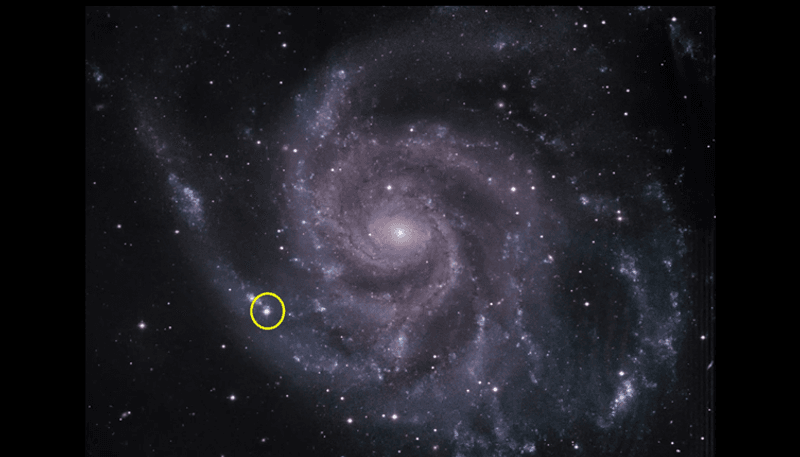It doesn't look like much, but the image above is the first color photograph taken of Pluto and Charon by the New Horizons spacecraft as it heads for its flyby of the icy worlds in July.
Clear images of the pair are hard to come by at this point, not only because New Horizons is still three months away, but because this far from the sun there is little light to reflect. Until now, NASA restricted the images it has taken to black and white, but at 115 million kilometers (71 million miles) from the target system, it has used the Ralph color imager for the first time.
The images taken in the lead-up are of more than symbolic value. Unlike probes to Mars, Saturn, or even Ceres, New Horizons is not stopping to orbit. Decelerating would be impractical for a craft traveling at more than 50,000 kph (31,000 mph), particularly with Pluto's small gravity—one-fifteenth that of Earth's—to catch it. Consequently, it is essential to collect as much data as possible in the short time available as New Horizons flies by.
In order to do that, New Horizons is programmed to focus on observations during the closest period, sending what it collects back at a more leisurely pace thereafter. The last thing mission control wants is to have to suspend operations to change plans, particularly given the four hours it takes for messages traveling at the speed of light to reach Pluto. Consequently, the images collected on the approach are being used to plan the exact path the craft will take, culminating in a flyby 12,500 kilometers (7,750 miles) from Pluto's surface.
“Our team has worked hard to get to this point, and we know we have just one shot to make this work," said Alice Bowman of Johns Hopkins University.
Alan Stern of the Southwest Research Institute (SwRI) said: "This is pure exploration; we're going to turn points of light into a planet and a system of moons before your eyes!"
Nevertheless, the focus of interest has shifted substantially since New Horizons was launched from Pluto towards its moons. For one thing, there are multiple moons to study. When the craft was approved in 2001, Charon was the only known moon. Four more were discovered between 2005 and 2012, as well as a quasi-satellite, temporarily trapped in orbit.
Moreover, as time goes by, Charon is becoming an increasingly interesting object, or as SwRI's Leslie Young put it, "Charon is a rising star in terms of scientific interest, and we can't wait to reveal it in detail in July.” The renewed attention on Charon culminated with the theory that it may once have had an underground ocean, traces of which may be revealed by cracks on its surface.




